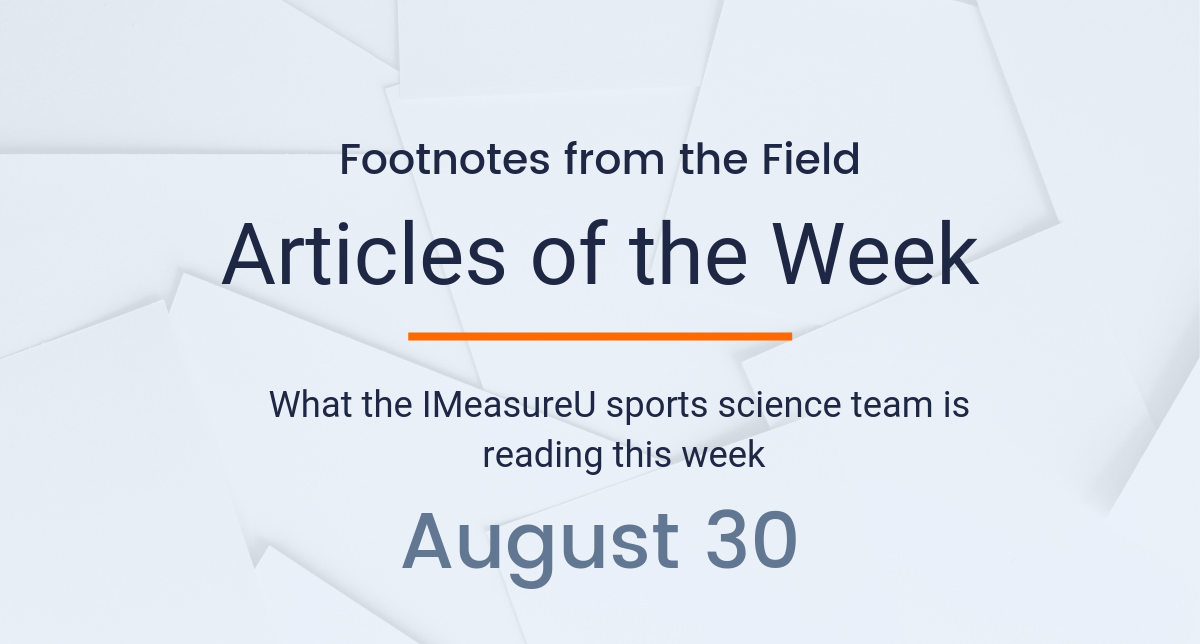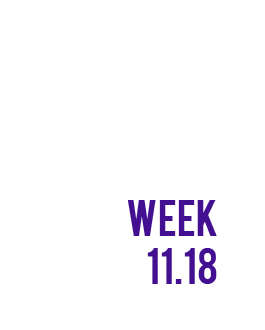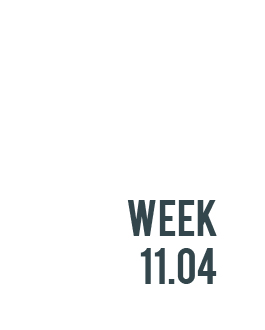
Here’s what the sports science team at IMeasureU is reading this week:
The first article from this edition of the articles of the week comes from Javier Nuñez and colleagues in the International Journal of Sports Medicine. The aims of this study were to analyse the effect of chronic strength training over concentric power, eccentric power, ECC/CON ratio, and 20 m linear sprint performance in elite young soccer players. The results suggest that the use of conical pulley horizontal acceleration exercises optimizes the mean power outputs in the concentric and eccentric phases, but mainly optimizes the relationship between the eccentric/concentric ratio.
The next article comes from author Carolyn Emery and Kati Pasanen at the University of Calgary in the Best Practice & Research Clinical Rheumatology
journal. The aim of this article was to give an overview of the practice in sport regarding injury prevention strategies. Summarising their findings, Emery and Pasanen state that neuromuscular training warm up programs including strength, balance, aerobic, and agility components can reduce the risk of musculoskeletal injuries at least 35% in team sport and other youth sport settings. They also detail their opinion on ankle bracing, wrist guard protection and workload modification, all in the context of optimal injury prevention programs.
This article in the Journal of Sports Science and Medicine by author Emily Pluhar and colleagues aimed to determine whether 1) the proportion of athletes with mental health diagnoses and 2) athlete motivations for playing differ between team sports and individual sports. With mental health high on the agenda of many leading organisations worldwide, we thought it appropriate and timely to highlight this article. The results of this study suggest that individual sport athletes are more likely to report anxiety and depression than team sport athletes. Also, the mental health benefits of participation in organized sports may vary between individual sport athletes and those playing team sports.
Our fourth article comes from the Journal of Sports Science and authors Daniel Crago, Christopher Bishop and John Arnold. The aim of this study was to determine the effect of foot orthoses and insoles on running economy and performance in distance runners. Clear conclusions were drawn by the authors which suggest that foot orthoses and shock absorbing insoles may adversely affect running economy in distance runners.
The last article in this week’s articles of the week comes from Martyn Crowe and colleagues from the University of Cumbria and Lancaster University. The aim of this study was to was to investigate the effect of unilateral restrictions in ankle-dorsiflexion range of motion on interlimb vertical ground reaction force (vGRF) asymmetries. Clear conclusions were drawn by the authors which suggest that interlimb differences in ankle can cause interlimb asymmetries in vGRF during bilateral squatting. As such, athletes with asymmetrical squat mechanics should be screened for interlimb differences in ankle dorsiflexion range of movement to ascertain whether it is a contributing factor.
For more sports science check out our blog for in-depth case studies and industry updates. Also, be sure to sign up for our newsletter below so you are always up to date with the latest research.




